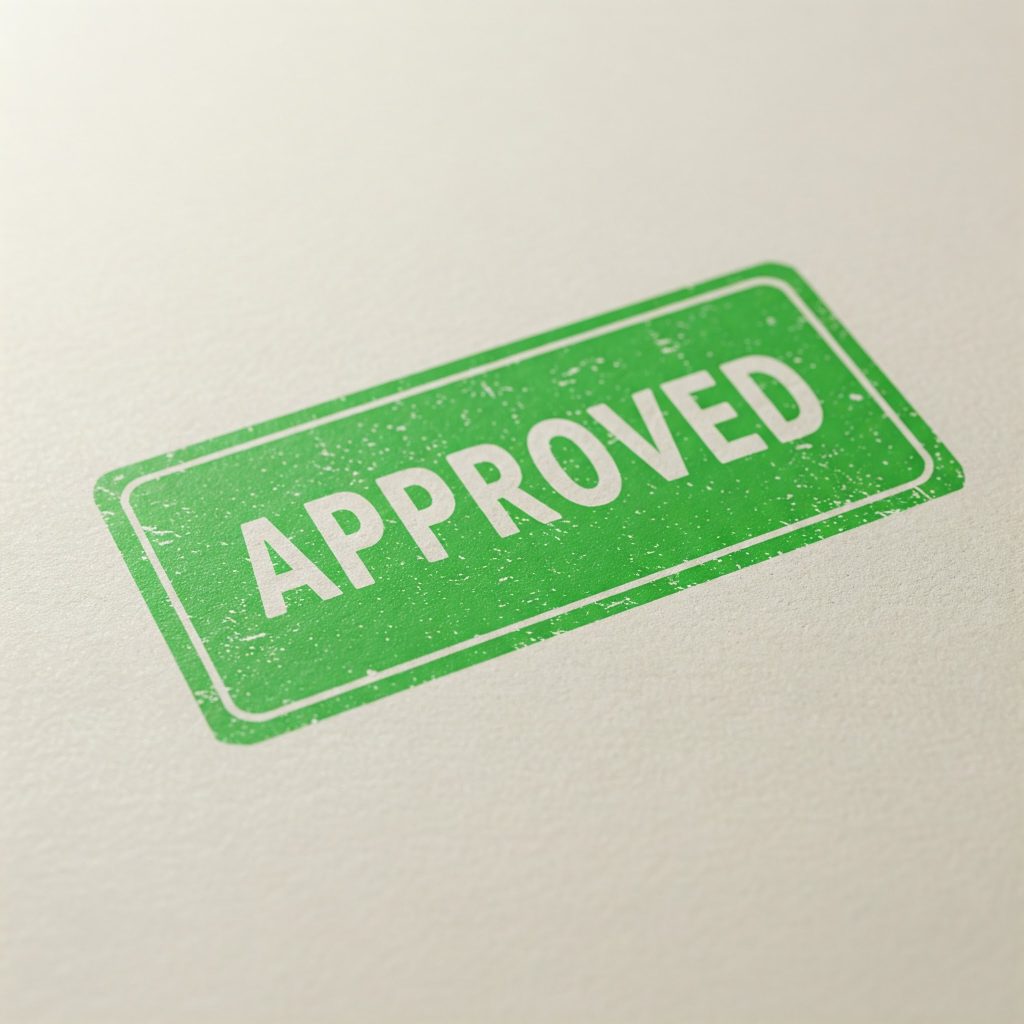Approved Supplier Lists: A Complete Guide to Selection, Management, and Technological Integration
- April 11, 2025

- Supplier Management
When it comes to running a successful business, especially in industries like manufacturing, healthcare, food, or energy, choosing the right suppliers isn’t just important — it’s critical. One tool that helps achieve these goals is the Approved Supplier List (ASL), also known as an Approved Vendor List (AVL) or a Qualified Supplier List (QPL). Having a list of qualified suppliers plays a pivotal role in streamlining purchasing processes and ensuring quality partnerships. In this blog post, we’ll explore what approved supplier lists are, why they’re used, how they’re created and managed, and where technology can enhance their effectiveness.
What is an Approved Supplier List?
An Approved Supplier List is a curated roster of pre-vetted & qualified suppliers or vendors that a business has deemed as acceptable to provide specific goods or services. These suppliers have met the organization’s standards for quality, reliability, pricing, compliance, and other critical criteria. The ASL acts as a go-to reference for procurement teams, ensuring that purchases are made from trusted partners who align with the company’s goals and requirements.
Think of an ASL as a shortlist of reliable vendors—whether it’s a manufacturer providing raw materials, a fabricator performing critical welds with tight tolerances, or an equipment supplier providing products where high performance and reliability is required. Instead of starting from scratch every time a purchase is needed, businesses can turn to their ASL to quickly identify suitable suppliers.
Why Are Approved Supplier Lists Used?
Approved supplier lists are a cornerstone of effective procurement for several reasons:
- Quality Assurance: By vetting suppliers beforehand, businesses ensure that only those meeting high standards for product or service quality make the list. This reduces the risk of receiving subpar goods or services.
- Time Efficiency: An Approved Supplier List eliminates the need to research and evaluate suppliers for every purchase, speeding up the procurement process.
- Cost Control: Pre-negotiated contracts or pricing agreements with approved suppliers often lead to better rates, helping businesses stay within budget.
- Risk Mitigation: Suppliers on an Approved Supplier List are typically screened for compliance with regulations, financial stability, and ethical practices, reducing risks related to fraud, delays, or legal issues.
- Consistency: Using a select group of suppliers fosters consistent quality and service, which is especially important for businesses with standardized processes or products.
- Stronger Relationships: Working with a smaller pool of trusted vendors encourages long-term partnerships, which can lead to better terms, priority service, or collaborative innovation.
For example, a restaurant chain might maintain an Approved Vendor List to source fresh produce only from farms that meet food quality standards, ensuring consistent quality across locations while minimizing health risks.
How Are Approved Supplier Lists Created?
Creating an ASL is a structured process that requires careful planning and evaluation. Here’s a step-by-step look at how businesses typically build their lists:
- Define Requirements: Start by identifying the goods or services the business needs and the criteria suppliers must meet. This could include quality standards, delivery timelines, pricing thresholds, certifications (e.g., ISO, FDA, NADCAP), or sustainability goals.
- Research Potential Suppliers: Gather a pool of candidates through market research, industry referrals, trade shows, or online platforms. Consider both local and global suppliers, depending on the business’s scope.
- Evaluate Candidates: Assess suppliers based on predefined criteria. Common evaluation methods include:
- RFI (Request for Information): Gather basic details about the supplier’s capabilities.
- RFQ (Request for Quote): Compare pricing and terms. RFQ software can help facilitate these supplier communications and organize responses.
- Site Visits or Audits: Verify facilities, processes, or compliance. When the supplier is being approved to perform a specific process then this will often involve the supplier producing a test sample that is then examined for compliance with the specification.
- Performance History: Review past performance, customer feedback, or references. Procurement platforms can make capturing data and running reports a straightforward process.
- Shortlist and Approve: Narrow down the list to suppliers who meet or exceed standards. This step often involves cross-departmental input from procurement, engineering, and quality assurance.
- Formalize Agreements: Negotiate contracts or framework agreements with approved suppliers, outlining terms like pricing, delivery schedules, and service levels.
- Document the List: Compile the ASL in an accessible format, preferably in a software platform or database, including key details like supplier names, contact information, specialties, and contract terms.
How Are Approved Supplier Lists Managed?
Maintaining an ASL is an ongoing process to ensure it remains relevant and effective. Here’s how businesses manage their lists:
- Regular Reviews: Periodically reassess suppliers to confirm they still meet standards. This might involve updated audits, performance reviews, or contract renegotiations.
- Performance Monitoring: Track key metrics like on-time delivery, defect rates, or customer service responsiveness. Suppliers who consistently underperform may be removed.
- Updates for Changing Needs: As business needs evolve—say, new product lines or regulatory changes—the ASL must be updated to include suppliers who can meet these demands.
- Supplier Communication: Maintain open lines of communication to address issues, share feedback, or negotiate new terms. Strong relationships are key to long-term success.
- Supplier Diversity Considerations: Sometimes organizations may opt for a single sourcing strategy or even find themselves in a sole sourcing situation. It is always important to continually evaluate whether there are sufficient suppliers available on the approved supplier to ensure healthy competition when bidding out new projects.
- Compliance Checks: Ensure suppliers continue to meet legal, ethical, and industry-specific requirements, such as environmental regulations or labor standards.
- Centralized Access: Store the ASL in a shared system so authorized employees can access it easily, avoiding unauthorized purchases from unapproved vendors.
For instance, a manufacturing company might review its Approved Supplier List annually, removing a supplier who repeatedly did not meet quality standards or adding a new one with better capabilities and higher quality products.
Where Technology Plays a Role
Technology has transformed how businesses create, manage, and leverage approved supplier lists, making the process more efficient and data-driven. Here are some key ways technology streamline management of approved supplier lists:
- Procurement Software: Platforms like Lasso centralize Approved Supplier List management, allowing businesses to store supplier data, track performance, and automate approvals.
- Supplier Portals: Online portals enable suppliers to submit updated certifications, pricing, or performance data, reducing manual work for procurement teams.
- Data Analytics: Advanced analytics can evaluate supplier performance in real time, identifying trends like cost increases or delivery delays. This helps businesses make informed decisions about which suppliers to retain or replace.
- AI and Machine Learning: AI can predict supplier reliability based on historical data or flag risks like financial instability. It can also recommend new suppliers by analyzing market trends.
- Cloud-Based Collaboration: Cloud platforms allow cross-functional teams—procurement, engineering, and quality—to collaborate on Approved Vendor List updates, ensuring alignment and accessibility from anywhere.
- Automation: Automated workflows can streamline supplier onboarding, contract renewals, or performance reviews, saving time and reducing errors.
For example, a retailer using procurement software might receive an alert when a supplier’s certification is about to expire, prompting a quick review to keep the ASL compliant.
Challenges and Considerations
While ASLs are powerful, they come with challenges:
- Over-Reliance: Depending too heavily on a small group of suppliers can create risks if one fails to deliver. This can happen in single or sole source situations where there is only one approved supplier, reducing the effectiveness of competitive bidding.
- Maintenance Costs: Regularly updating and auditing the list requires time and resources.
- Bias Toward Existing Suppliers: Businesses may overlook innovative new vendors if the ASL isn’t refreshed frequently or they may consider it to be too much work to qualify a new supplier, even if the new supplier can potentially provide more innovative solutions.
- Balancing Flexibility and Control: The list should be strict enough to ensure quality but flexible enough to accommodate urgent or unique needs.
To address these, businesses should strike a balance between maintaining a robust ASL and staying open to exploring new supplier relationships when necessary.
Final Thoughts
Approved supplier lists are more than just a procurement tool—they’re a strategic asset that drives efficiency, quality, and trust in the supply chain. By carefully creating and managing an Approved Vendor List, businesses can save time, reduce risks, and build stronger vendor partnerships. With the integration of technology, from procurement platforms to AI-driven insights, ASLs are easier than ever to manage, enabling businesses to stay agile in a fast-changing world.
Whether you’re a small business sourcing local materials or a global corporation managing a complex supply chain, an approved supplier list can make all the difference. Check out Lasso’s supplier relationship management capabilities for your supplier qualification needs.
Table of Contents
- What is an Approved Supplier List?
- Why Are Approved Supplier Lists Used?
- How Are Approved Supplier Lists Created?
- How Are Approved Supplier Lists Managed?
- Where Technology Plays a Role
- Challenges and Considerations

